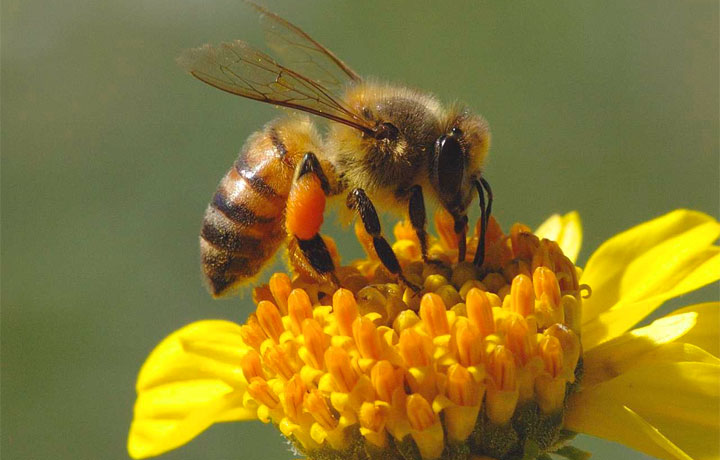Do you like to enjoy the sweetness of cherries and strawberries or wake up in the morning with the intense aroma of coffee? Thank the bees.
35% of global food production and 76% of the world’s major crops depend on these extraordinary insects. Pollination is also estimated to be worth around $200 billion to ecosystems, as well as 15 billion of the EU’s annual agricultural production.
Despite their importance, bees are gradually disappearing from our planet. In 2014, 10 million hives have been lost, a tragedy that scientists call “colony collapse disorder”.
But what is the cause of all this?
After the massive use of pesticides, climate change is one of the biggest threats to bees. These insects are sensitive to change in temperatures, in fact they are also called “sentinel”: a decline in bee colonies means a decrease of the environmental quality of an area.
The first consequences have been found in honey production. According to the data provided by the Italian beekeepers of Unaapi (Unione Associazioni Apicoltori Italiani), production has dropped by 80% because of drought. However, the most alarming figure is given by the Bioclimatology Research Centre of the University of Milan, which even theorizes the disappearance of honey in the next 100 years.
We can identify three macro consequences of climate change.
1) Loss of habitat. Climate change leads to an increment of drought, not allowing flowers to secrete enough nectar and pollen for bees. Bees are forced to migrate to cooler places. However, these movements do not occur fast enough to counteract global warming. As a result, their movement area is reduced by 300km.
2) Changing season. The shortening of cold periods leads to earlier blooms. Therefore, flowers generate pollen and nectar at a time when the bees are not yet ready to harvest it. This phase shift has also effects on bee health. In fact, they cannot manage the stress of too much heat, that compromises their reproductive capacities and makes them more vulnerable to parasites.
3) Pest in action. While global warming determines a loss of pollinators, it also encourages the spread of pests such as Varroa destructor mite and Aethina tumida, the two major threats for bees and their hives.
4) Ecosystem at risk. According to the Report Potential effects of climate change on crop pollination by FAO, bees are responsible for about 70% of the pollination of all living plant species on the planet. Hence, their absence would lead to the extinction of many plants such as clover and alfalfa.
How can we act?
1) Plant bee-friendly plants. Bees are greedy for many herbs such as coriander, sage, oregano, lavender and thyme. They are also attracted by some colors such as blue, purple and yellow. You will help them and make your garden or balcony more colorful and fragrant.
2) Support your local beekeepers. Search on Internet in which part of your region they are located and buy their honey. In this way you will make a great contribution to local community as well as benefit from the many properties of honey (decongestant and detoxifying action, stimulates the immune system and it is good for the blood). For further information of Italian beekeepers visit the website www.mieliditalia.it
3) Rescue. If you find a bee in trouble, you can help it refresh itself by giving water with a bit of sugar or honey. Be careful not to drown it though!
To deepen the topic:
https://www.youtube.com/watch?v=dY7iATJVCso –> TEDTalks. Marla Spivak: Why bees are disappearing
https://www.youtube.com/watch?v=c963NhkfNY0 –> What if All the bees in The World disappeared?
https://www.youtube.com/watch?v=nZlEjDLJCmg –>How Do Bees Make Honey?
Sources:



